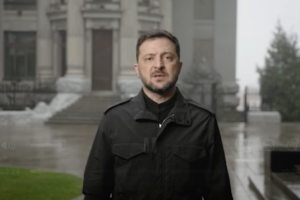
A massive rock wall towers over a small plateau in France’s southern Haute-Provence region. At its base, a few stones sit in the grass, looking as if they’ve fallen there by chance. Beneath them rest the ashes of a young man — it was his favorite spot — where his family have chosen to have him rest in peace. In Germany, that wouldn’t be possible.
German law generally requires that the dead be buried in an approved cemetery, a burial forest or a designated section of the sea. Keeping an urn in your backyard is also not permitted. Nor is scattering a loved one’s ashes in the wind.
Flowers accompany a deceased’s ashes scattered at seaImage: Stefan Sauer/ZB/picture alliance
Hot-air balloons and diamonds
While Germany is strict about burial rules, people in other countries are exploring new ways and places to bid their last farewells.
In Switzerland, some mourners scatter ashes among alpine meadows and rocky outcrops. There and in the Netherlands, ashes can also be released from a hot-air balloon. Once the balloon reaches the chosen spot, the ashes are scattered in the wind, and the coordinates are later sent to the family with a certificate. Another option is a farewell from a small aircraft.
Some US companies offer an even loftier goodbye, sending a small portion of ashes into space. A legal gray area makes that possible for Germans, too, since most of the remains do not leave Earth and are buried in an urn.
More and more funeral homes are also offering so-called ‘diamond burials’Image: Soeren Stache/ZB/picture alliance
An increasing number of companies also offer memorial or cremation diamonds. Over several months, carbon extracted from a person’s ashes or hair is pressed into synthetic diamonds that can be set into jewelry.
The trend to sustainable funerals
For people who value sustainability even after death, the options are expanding. Environmental consciousness is clearly on the rise across Europe. In Scandinavia and the Netherlands, new cemeteries are emerging that focus on natural materials and environmentally friendly design.
Simple and dignified: Stockholm’s Skogskyrkogarden Cemetery is a UNESCO World Heritage SiteImage: Oscar Gonzalez/Sipa USA/picture alliance
Across Europe, natural and eco-conscious funerals are gaining traction. In meadows and forests, the dead are laid to rest in biodegradable coffins made without varnish or metal, and without embalming or chemical additives.
Environmental concerns are shaping cremation as well. According to the German Quality Association for Cremation Facilities, cremation accounted for 81% of burials in Germany in 2024. Modern crematoriums now use heat-recovery systems, and funeral directors increasingly offer biodegradable urns. These urns are often used in tree burials in forest cemeteries, where graves blend naturally into the landscape.
In some places, burials can be anonymous; in others, small plaques mark the spot.
When a person becomes human compost
Some funeral homes are now offering a more natural option known as human composting. The body is placed in a cocoon of straw, hay, flowers and a small amount of plant charcoal. After a few days, a gentle, cradle-like mechanism rocks the cocoon at regular intervals, helping distribute moisture evenly.
A more sustainable form of burial: Human composting Image: Christian Charisius/dpa/picture alliance
Natural microorganisms in the body, combined with the plant material, break down the remains into fine soil in about 40 days. A biological air filter prevents odors. The remaining bones are ground into a fine powder and mixed into the soil. The resulting earth is placed in a cemetery plot and planted — often with a rose bush, lavender or another plant the person chose before their death.
Pulverized in flash freezing
Swedish biologist Susanne Wiigh-Masak is considered a pioneer of another environmentally-friendly burial method — promession. In her process, the body is first flash-frozen at minus 18 degrees Celsius (64°F), then immersed in liquid nitrogen at minus 196 degrees (-321°F). The extreme cold makes the body so brittle that even slight vibrations cause it to crumble into a fine powder. In a vacuum chamber, moisture is removed, and any metal — such as dental fillings — is taken out.
The remains can then be placed in a small, compostable coffin made of corn or potato starch and buried in the ground. Although the procedure is patented in more than 30 countries, it has yet to be put into practice anywhere.
Cryonics, a method that also involves freezing and is used in countries such as the United States and Russia, differs from promession, as bodies are frozen below minus 130 degrees Celsius and kept intact — in the hope of future revival. Scientists consider the prospect extremely unlikely.
The way people are buried says much about the way they lived. Between an ornate grave and a tree root lies not only an aesthetic difference, but also a shift in how societies think about religion, ownership and nature — and, ultimately, how we remember our dead.





